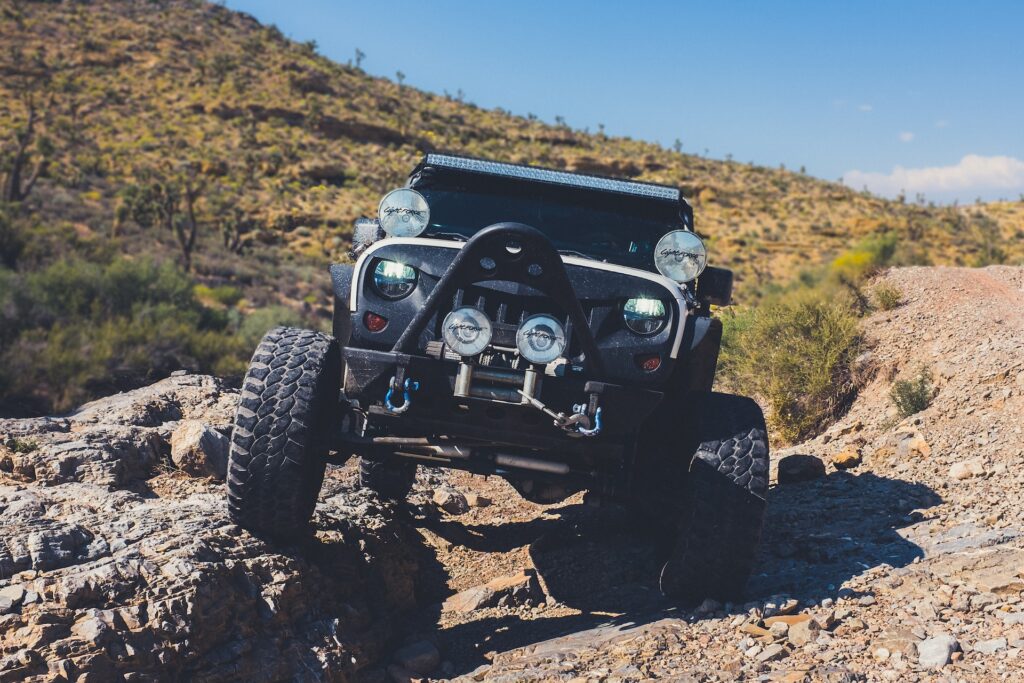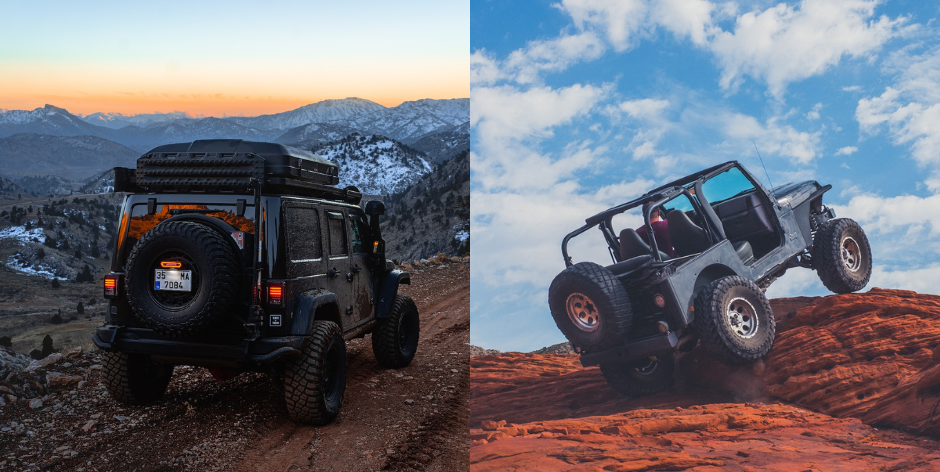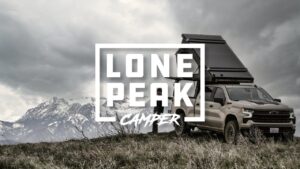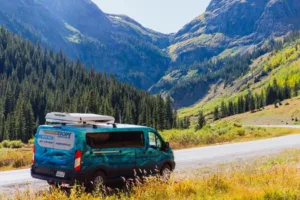When it comes to outdoor adventures, the terms “Overlanding” and “Off-Roading” are often used interchangeably, but they represent two distinct experiences. In this comprehensive guide, we’ll delve into the key differences between Overlanding vs Off-Roading, from the types of vehicles used and essential gear to skill sets, typical destinations, and much more. Whether you’re an adventure junkie looking for your next thrill or a beginner seeking to understand which activity best suits your style, this guide is your go-to resource.
Table of Contents
Definition and Origin
When it comes to outdoor adventures, two terms often come up: Overlanding and Off-Roading. While they may seem similar, they have distinct definitions and origins that set them apart. Understanding the differences between Overlanding vs Off-Roading can help you choose the right adventure for you.
Overlanding
Definition: Overlanding is a self-reliant adventure travel activity where the journey is more important than the destination. It often involves crossing long distances and can last for days, weeks, or even months.
Origin: The term “overlanding” has its roots in Australia, where it was used to describe the herding of livestock across vast distances. Today, it has evolved into a form of extended adventure travel.
Off-Roading
Definition: Off-Roading, on the other hand, is more about conquering challenging terrains and obstacles. The focus is less on the journey and more on the technical skills required to navigate through mud, rocks, and other rough terrains.
Origin: Off-Roading originated as a military tactic, where vehicles had to navigate through uncharted terrains. It has since become a popular recreational activity.
Primary Objectives
When choosing between Overlanding vs Off-Roading, understanding the primary objectives of each activity can help you align your adventure with your personal goals. While both involve a love for the outdoors and a sense of adventure, the core objectives differ significantly.
Overlanding Objectives
Exploration: The main objective of overlanding is exploration and discovery. Overlanders often aim to explore remote landscapes and immerse themselves in different cultures.
Self-Reliance: Overlanding tests your ability to be self-reliant, as you’ll need to carry all the essentials for an extended period.
Journey-Oriented: Unlike off-roading, the journey is the destination in overlanding. The focus is on the experience of travel itself.
Off-Roading Objectives
Skill Mastery: Off-roading is all about mastering the technical skills required to navigate challenging terrains.
Adrenaline Rush: The thrill of overcoming obstacles is a primary objective for many off-roaders.
Short-Term Adventure: Off-roading trips are generally shorter and more intense, focusing on the excitement of the moment rather than the extended journey.
Overlanding vs Off-Roading Vehicles
The type of vehicle you choose can make or break your adventure, especially when it comes to Overlanding vs Off-Roading. While both activities require sturdy, reliable vehicles, the specifications and modifications can vary significantly based on your primary objectives.
Overlanding Vehicles
SUVs and Trucks: Overlanding often involves long journeys, so comfort and storage space are key. SUVs and pickup trucks with 4×4 capabilities are popular choices.
Modified Vans: Some overlanders opt for modified vans that can serve as a mobile home, complete with sleeping and cooking facilities.

Adventure Motorcycles: For solo travelers or those who prefer two wheels, adventure motorcycles offer a nimble alternative.
Off-Roading Vehicles
Jeeps and 4x4s: These are the go-to vehicles for off-roading, designed to handle a variety of challenging terrains.

ATVs and UTVs: All-Terrain Vehicles (ATVs) and Utility Task Vehicles (UTVs) offer a more compact option for tackling obstacles.
Dirt Bikes: For those who crave agility and speed, dirt bikes are a popular choice for off-roading.
Essential Gear
When it comes to Overlanding vs Off-Roading, the gear you pack can be as important as the vehicle you drive. Both activities require specialized equipment, but the types of gear differ based on your objectives and the duration of your adventure.
Essential Gear for Overlanding
Navigation Tools: Maps, Camp Finders, GPS, and compasses are crucial for long journeys.
Camping Supplies: Tents, sleeping bags, and cooking equipment are must-haves for extended trips.
Emergency Kit: First aid supplies, extra food and water, and basic tools are essential for self-reliance.
Essential Gear for Off-Roading
Recovery Gear: Winches, tow straps, and shovels can help you get out of sticky situations.
Protective Gear: Helmets, gloves, and protective clothing are important for safety.
Vehicle Mods: Skid plates, roll cages, and specialized tires can enhance your vehicle’s off-road capabilities.
Skill Sets Required
While both Overlanding and Off-Roading offer a thrilling escape into the great outdoors, the skill sets required for each are distinct. Whether you’re a seasoned adventurer or a newbie, understanding the skills needed for Overlanding vs Off-Roading can help you prepare better for your journey.
Skill Sets for Overlanding
Navigation Skills: Knowing how to read maps and use GPS systems is crucial for long journeys.
Basic Mechanics: A rudimentary understanding of vehicle maintenance can be a lifesaver in remote areas.
Survival Skills: Knowing how to start a fire, purify water, and administer first aid are essential for extended trips.
Skill Sets for Off-Roading
Technical Driving: Mastery over your vehicle’s controls and understanding how to navigate through difficult terrains are key.
Quick Decision-Making: Off-roading often requires split-second decisions to safely navigate obstacles.
Risk Assessment: Being able to quickly assess the risk level of different paths or obstacles is crucial for a safe off-roading experience.
Typical Destinations
One of the most exciting aspects of both Overlanding and Off-Roading is the variety of destinations you can explore. However, the types of places you’ll visit differ significantly when comparing Overlanding vs Off-Roading. Here’s what you can typically expect:
Typical Destinations for Overlanding
Remote Landscapes: Overlanding often takes you to far-flung places, from deserts to mountain ranges.
Cultural Landmarks: Overlanders frequently visit historical sites, local villages, and other culturally significant destinations.
National Parks: These are popular spots for overlanders looking for a mix of adventure and natural beauty.
Typical Destinations for Off-Roading
Off-Road Parks: These are specially designed areas where off-roaders can tackle a variety of obstacles.
Mountain Trails: Off-roading often involves climbing steep, rocky paths in mountainous regions.
Mud Bogs: These are wet, muddy areas that offer a unique challenge for off-roading enthusiasts.
Duration of the Adventure
The time you’ll spend on your adventure is another key difference when considering Overlanding vs Off-Roading. While both can offer short bursts of excitement or extended periods of exploration, the typical durations vary.
Duration of Overlanding Adventures
Days to Months: Overlanding is often a long-term commitment, with some adventures lasting several days, weeks, months, or even years.
Flexible Itinerary: The duration can be flexible, allowing you to explore at your own pace and extend your trip as desired.
Duration of Off-Roading Adventures
Hours to Days: Off-roading is generally a shorter-term activity, often lasting just a few hours to a weekend.
Fixed Schedule: Off-roading trips are usually planned for specific durations, especially if you’re visiting off-road parks with operating hours.
Costs and Budgeting
Budgeting is a crucial aspect of any adventure, and it varies significantly when comparing Overlanding vs Off-Roading. While both activities can be tailored to fit various budgets, understanding the typical costs can help you plan more effectively.
Costs and Budgeting for Overlanding
Vehicle Maintenance: Overlanding often involves long distances, so regular maintenance and potential repairs can add up.
Travel Expenses: Fuel, camping fees, and food for extended trips can be significant.
Gear and Equipment: High-quality camping and survival gear are essential, and these can be a one-time significant investment.
Costs and Budgeting for Off-Roading
Park Fees: Many off-road parks charge entry fees, which can add up if you go frequently.
Vehicle Mods: Specialized tires, winches, and other modifications can be costly but are often necessary for off-roading.
Protective Gear: Helmets, gloves, and other safety gear are additional costs to consider.
Pros and Cons: Overlanding vs Off-Roading
Every adventure comes with its own set of advantages and disadvantages. When weighing Overlanding vs Off-Roading, understanding the pros and cons of each can help you make a more informed decision.
Pros and Cons of Overlanding
Pros:
- Extended Exploration: Overlanding allows you to explore remote areas over an extended period.
- Cultural Immersion: You get the opportunity to immerse yourself in different cultures and environments.
- Self-Reliance: The journey teaches you valuable survival and mechanical skills.
Cons:
- High Costs: Extended trips can be expensive, especially with fuel, maintenance, and gear.
- Time-Consuming: Overlanding requires a significant time commitment, which may not be feasible for everyone.
Pros and Cons of Off-Roading
Pros:
- Adrenaline Rush: Off-roading offers immediate thrills and challenges.
- Skill Development: You can quickly develop technical driving skills.
- Short-Term Commitment: Off-roading can be done in a day or a weekend, making it more accessible.
Cons:
- Risk of Damage: The challenging terrains can be hard on your vehicle, leading to potential damage.
- Limited Exploration: Off-roading usually doesn’t offer the same depth of cultural or environmental exploration.
Conclusion
Choosing between Overlanding vs Off-Roading is like choosing between two different kinds of adventures—each with its own unique thrills, challenges, and rewards. While Overlanding offers the allure of extended exploration and cultural immersion, Off-Roading provides the immediate gratification of conquering challenging terrains and obstacles.
Understanding the key differences in vehicle types, essential gear, skill sets, typical destinations, duration, costs, and the pros and cons can help you make an informed decision tailored to your interests and lifestyle. Whether you’re a seasoned adventurer or a newbie looking to dip your toes into the world of outdoor exploration, this guide aims to equip you with the knowledge you need to choose the adventure that’s right for you.
So, are you ready to hit the road and explore the unknown, or are you more inclined to tackle the immediate challenges of rugged terrains? Either way, the world is your playground, and adventure awaits!




